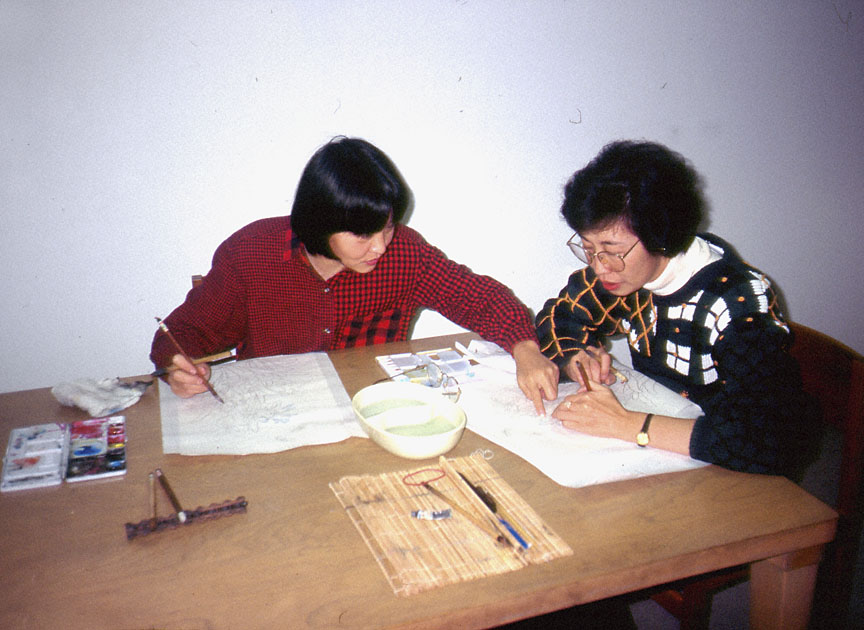- Catalog No. —
- S2-2081
- Date —
- 1995
- Era —
- 1981-Present (Recent Oregon History)
- Themes —
- Arts, Folklife, Race, Ethnicity, and Nationality
- Credits —
- Oregon Historical Society Folklife Program
- Regions —
- Portland Metropolitan
- Author —
- Unknown
Gong Bi, Traditional Chinese Painting
This photograph was taken to document Jean Qin Ye’s (left) instruction of Rosalind Wang (right) in Gong Bi, a traditional Chinese painting style. The two artists worked together in 1995 through the Traditional Arts Apprenticeship Program of the Oregon Historical Society Folklife Program.
Jean Qin Ye was born into a well-known family of artists in Shanghai, China, in 1953. She began studying traditional Chinese arts at the age of ten, and by her early twenties had begun working as a professional artist. In 1991, after studying Western art styles during her early to mid-thirties, Ye moved to Portland. Although she has mastered the arts of Chinese calligraphy, paper cutting, and clay figuring, Ye is most well-known for her painting. According to Ye, “My paintings combine the techniques of traditional Chinese painting with a hint of western painting.…Together with refined calligraphy and various classical seals, my painting has achieved a harmonious balance between colors and patterns.”
Gong Bi paintings have been dated as far back as China’s Han Dynasty (206 B.C.E. to 220 C.E.). The painting style is characterized by fine, meticulous brushwork and the application of multiple layers of ink shading and color on specially-matted rice paper. Artists have traditionally produced paintings of flowers and birds. Typically, Gong Bi painters will “lay down” at least three layers of ink shading before adding multiple layers of color—often ten or more. Because artists must wait for one layer of paint to dry before applying the next, paintings can take months to complete. Ye believes Gong Bi painting “is like the Chinese personality—it’s a gradual revealing; you really have to dig to get inside.”
Written by Joshua Binus, © Oregon Historical Society, 2005.
